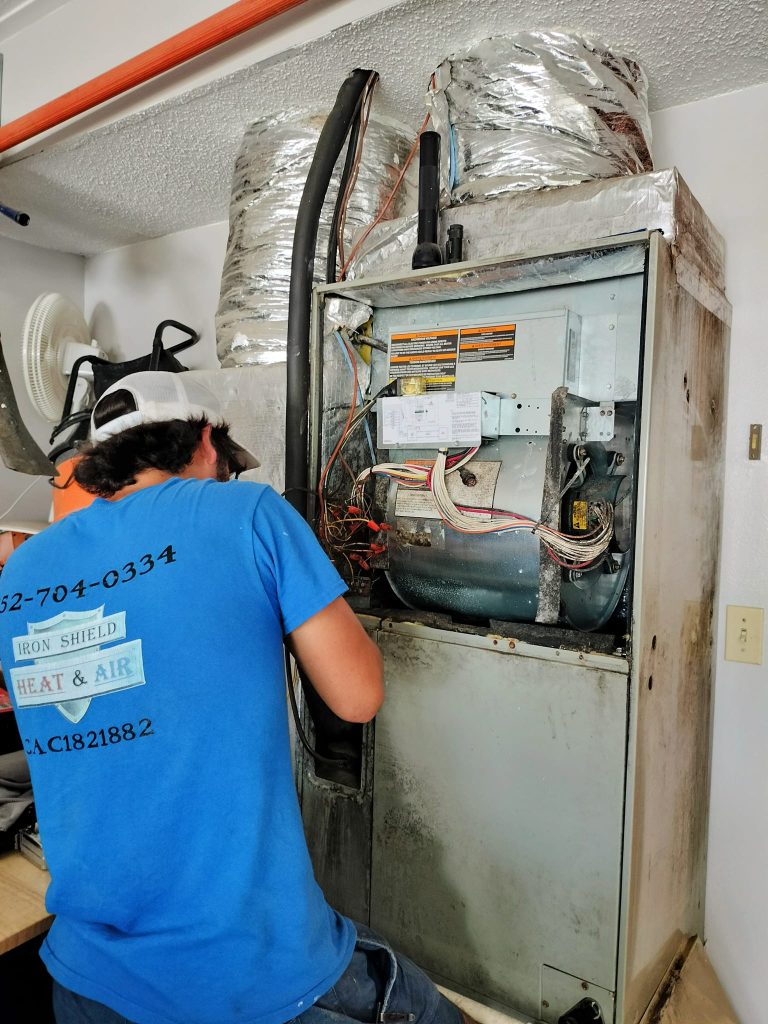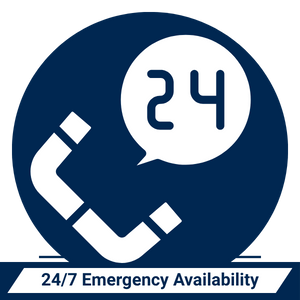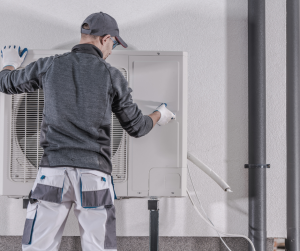If your air conditioning unit stops working suddenly, resetting your AC circuit breaker might be the solution. Knowing how to do this safely can help restore power and get your air conditioning running effectively again. This guide provides a detailed yet easy-to-follow approach to resetting your AC without risking damage to your system or personal safety.
Resetting your AC breaker can seem daunting, but with this step-by-step guide, you can address the problem and keep your air conditioner running smoothly. Let’s explore these steps to reset your AC circuit breaker.
Step-by-Step Guide to Reset Your AC Circuit Breaker
1. Verify the Power Supply to your Air Conditioning Unit
Before attempting to reset your system, always check the power supply to your air conditioning unit. Power surges or outages might cause the breaker to trip, leading to your AC blowing warm air. If your AC system isn’t receiving power, the reset process won’t help. Verify with a multimeter that the power supply entering your AC unit falls within the allowable range given by the manufacturer. This is required to avoid any electrical accidents during the reset process.
Examine your AC unit’s connections. Inspect for ripped or exposed wires that could cause an electrical danger or short circuit. Verify that every connection is safe and shows no indications of damage. Pay special attention to the wiring leading to the circuit breaker to ensure everything is working.
2. Find the Circuit Breaker Panel for Your AC System
The next step is to locate the breaker panel, which controls the electrical supply to your AC unit. This panel is often located in your basement, garage, utility room inside your home, or near the outdoor unit. Once you find it, open the panel to reveal the switches, including the one connected to your air conditioning unit. If the breaker for the air conditioner has tripped, it may require a reset to restore power.
3. Check for Damage or Wear
Visually inspect your panel. Carefully check the wiring for any signs of damage, such as fraying, wear, or corrosion, as damaged wiring could have caused the breaker to trip in the first place. Loose or faulty wiring can create electrical hazards, so ensuring all connections are secure and in good condition is crucial.
Inspect the electrical connections and ensure they are firmly attached. If you identify any issues, address them before resetting the breaker. Allocating time to assess these elements not only mitigates potential future complications but also improves the safety and efficiency of your air conditioning system. A comprehensive inspection is essential for sustaining the optimal performance of your air conditioning unit, thus averting potential risks and ensuring that your residence remains relaxed and comfortable.
4. Locate the Tripped Circuit Breaker
Once you’ve found the breaker panel, look for the breaker that controls the AC system. Begin by checking for switches that are slightly misaligned or positioned between “on” and “off.” These are the breakers that have likely tripped. Breakers trip due to issues such as overloads or short circuits, so caution is crucial. Before resetting the breaker, turn off devices or appliances connected to that specific circuit to prevent damage or further issues. This step is critical for maintaining safety and protecting your electrical system. Once you’ve found the tripped breaker, you can safely proceed with resetting.
5. Turn the Breaker Off, Then On
If everything looks safe, it’s time for a simple reset. To do this, switch it entirely to the “off” position and wait a few minutes before switching it back to “on.” This pause allows the system, especially the compressor, to cool down and reset properly. The usual wait is 3-5 minutes. If the compressor overheated, rushing the breaker reset could cause further damage. This simple step can save you from more severe issues. Also, be careful not to force the switch if it doesn’t want to stay on, as this may indicate a deeper problem with the electrical system.
6. Check Your Thermostat Settings
After resetting the unit, head to the thermostat. Ensure your air conditioning system is set to “cool” mode and at a temperature lower than the current room temperature. Visual indicators like the display on your thermostat can help you confirm whether the reset worked.
Testing Your Air Conditioner After the Reset
Once you’ve reset the circuit breaker and confirmed that the thermostat is set to cool, you must verify that the AC works correctly. Here’s how to make sure everything is functioning as expected.
1. Test the Airflow
Turn on your AC system and check if cool air is blowing smoothly from the vents. If the air feels warm or the fan isn’t running, your compressor or outdoor unit may have a more profound complication.
2. Listen for Unusual Noises
Listen for any strange noises coming from your AC unit. Grinding or rattling sounds could indicate a more severe issue requiring professional inspection.
3. Keep an Eye on Your AC Unit for Future Issues
After successfully resetting the AC, monitor the system for further AC problems. If the breaker trips repeatedly or your air conditioning system frequently malfunctions, you may be dealing with a more significant issue requiring professional attention.
Seek Professional Help
When handling your AC circuit breaker, it’s crucial to consult a professional for safe and optimal results. While some DIY methods might address minor concerns, the complexity of electrical systems demands expert help. Certified HVAC technicians can safely reset your AC and diagnose any hidden issues with your air conditioning system. Resetting a tripping breaker without understanding the root cause could lead to more significant damage or safety hazards.
Why Professional Help Matters
- Expertise: HVAC technicians have the tools and knowledge to identify complex problems.
- Safety: Working with electrical components can be dangerous. Professionals ensure safe AC repairs.
- Long-term solution: A technician can provide a thorough assessment to prevent future issues before they cause further damage to your air conditioning unit.
Tips to Prevent Future AC Circuit Breaker Issues
Here are a few preventative steps that can help prevent breaker trips and keep your air conditioning system running smoothly.
1. Keep Your Outdoor Unit Clear
Regularly inspect the outdoor unit. Debris can accumulate near it, affecting airflow and causing the system to overheat. Clear away any leaves, grass, or dirt to ensure proper airflow.
2. Change Your Air Filters Regularly
A dirty air filter can restrict airflow, causing your AC to work harder and potentially trip the breaker. Be sure to replace the filter every 1-3 months, depending on usage.
3. Schedule Regular AC Maintenance
Regular HVAC maintenance will keep your system running efficiently. During an inspection, a technician can check for potential issues before they become significant problems.
Great job resetting your AC circuit breaker! Now, you know how to troubleshoot your air conditioning system effectively and keep it running smoothly. Always prioritize safety. However, if the issue persists or the breaker continues to trip, it may indicate an intense issue with your air conditioning system. Don’t hesitate to call a professional HVAC technician for assistance. By taking proactive steps, you can ensure that your air conditioner stays in top shape and avoid costly repairs down the line.











